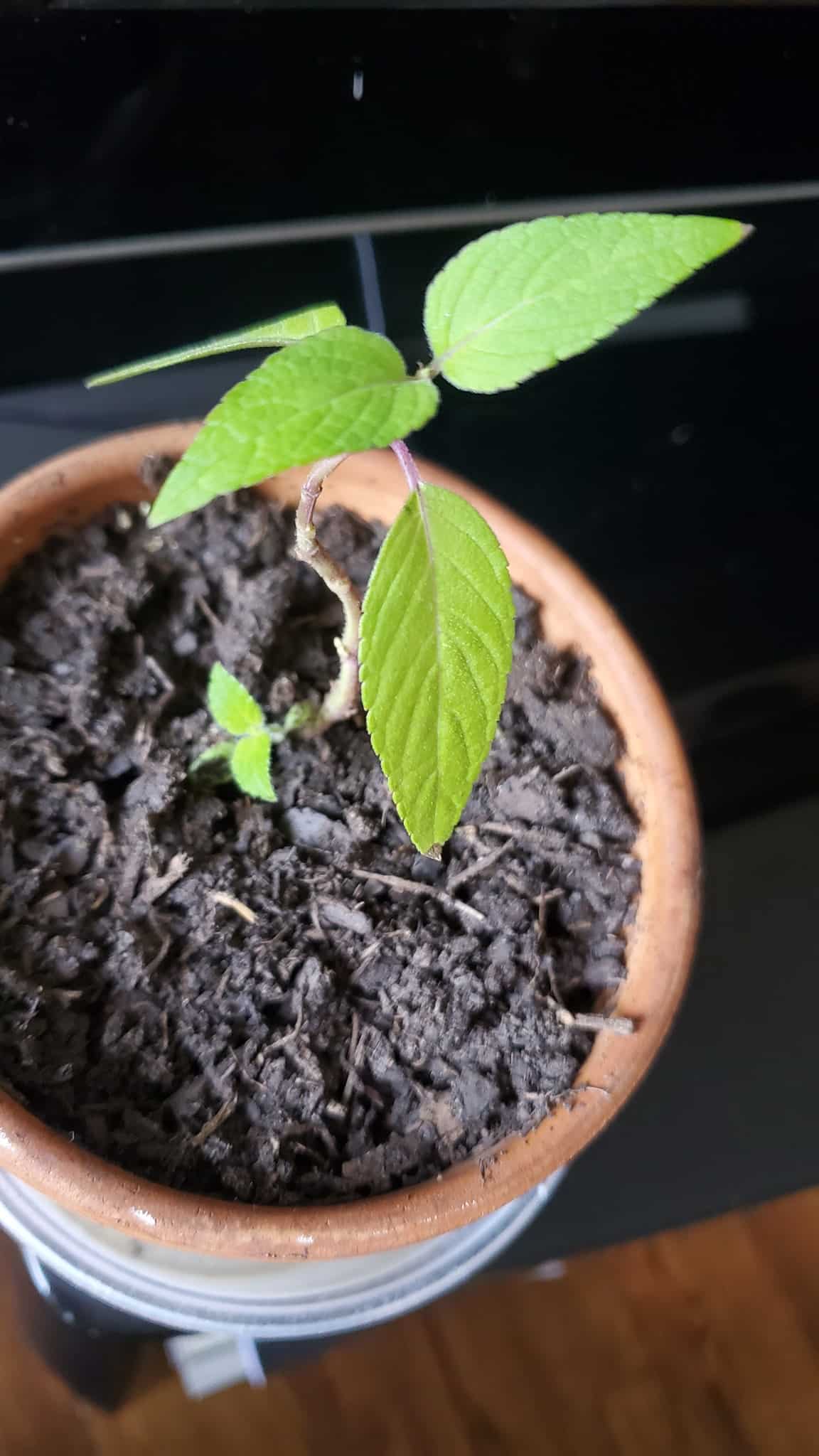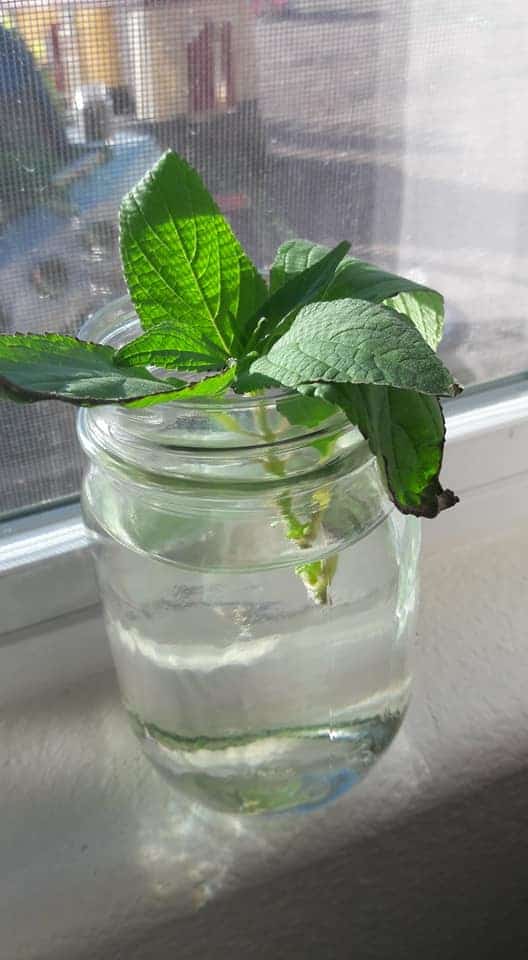My mom, a big gardening fanatic, is always in our verandas, and this springtime, she was trying to propagate Pineapple Sage.
The good part is that you have different options to propagate Pineapple Sage, and it is super easy. After learning about them from the article, you can fiddle with the convenient one.
Table of Contents Show
Reasons to Propagate Pineapple Sage
Propagation is an excellent way to grow your favourite plants in your house quickly compared to growing them from seeds.

Similarly, propagating Pineapple Sage is excellent because of the following reasons.
- Propagation of stem cuttings or root divisions is faster, and the plants can reach flowering maturity quickly.
- The propagated transplants are genetically identical to the mother plants.
- It avoids the hassle of growing Pineapple Sage through seeds.
Best Time to Propagate Pineapple Sage
Growing your pineapple sage during the winter season with artificial lights is highly not recommended.
They grow and bloom well with natural sunlight. While the Pineapple Sage is raised during the fall, it stays alive until winter.
Additionally, the frost from the cold weather does not allow them to survive for an extended period.
Thus, Pineapple Sages are usually grown during the spring season. Likewise, the flowers will already bloom at the beginning of spring.
Therefore, the next round of replanting or propagating your Pineapple Sage takes over for the following year.
How to Propagate Pineapple Sage?
While propagating your Pineapple Sage, it is essential to transplant them with enough space between them.
For example, you can leave at least 4 feet apart from each plant you grow.
Make sure to grow them in a big pot or place since they can grow up to 4 feet tall and wide.
Also, check for a plentiful supply of sunlight and well-drained soil with a pH of 6-8.
Choosing the Right Medium to Propagate Pineapple Sage
Generally, you can propagate Pineapple Sage in water or soil.
If you grow the plant in water, wait for the root hairs to grow about 1-2 inches long and then transplant it into the soil.
Remember to change the water once in 2 days or every day is even better.
If the propagation is done correctly, the roots will quickly adapt.
Propagate Pineapple Sage in Water
- High movement of gas and natural oxygen is present in water that helps the roots of Pineapple Sage to grow quickly.
- While propagating in water, the root hairs are thin, fragile, and small but more in strands.
- If you propagate it in tap water, there is less chance of root rot as they contain fewer bacteria.
Propagate Pineapple Sage in Soil
- While propagating directly in the soil, the roots are thicker and sturdier but have fewer strands.
- Propagating in soil poses high chance of root rot due to the tendency of waterlogging.
- Alongside, the soil makes the gas movement and oxygen flow less.

Transplanting Mediums for Pineapple Sage
- Garden ground is a good choice for optimum space between the plants, suitable growing conditions, and decorative plants for your garden.
- A container is suitable for easy transportability, easy carry, and decorating the balcony.
Do you know you can also propagate Snake Plants in water? Water helps them to grow roots at full tilt without any obstruction!
Methods to Propagate Pineapple Sage
Pineapple sage can be grown from seeds too. However, the seeds take 2 weeks to germinate and grow into a mature plant in the following season.
However, asexual propagation has stem cuttings and root divisions, which is probably faster.
1. Propagate Using Stem Cuttings
The easiest and fast-growing way to propagate Pineapple Sage is from stem cutting.
You can chop off the tip of the plant, including a 4-6 inches long soft stem with top one set of leaves, and remove all the flowers or buds with sterilized scissors.
Also, it’s better not to cut the plant before winter since they might be too fragile.
To borrow rapidly growing cuttings, early spring or late summer is the best time to propagate the plant.

Below are the points on using stem cutting to propagate Pineapple Sage.
- Take clean glass jars separately for individual cuttings and fill them with rooting hormone solution.
- Dip the cuttings in the water, cover them with a humidity dome, and situate them in bright sunlight.
- Maintain humidity around 40%, and don’t let the room temperature fall.
- After 2-3 weeks, when the cuttings sprout 1-2 inches long roots, transplant them to a well-draining potting soil.
- Use 12-14 inches deeper and broader terracotta pots with drainage holes. Ensure to use one container per cutting.
- After the next few weeks, the cuttings may develop new growths, ensuring a successful propagation.
2. Propagate Using Root Divisions
The root division is one of the many techniques to propagate your Pineapple Sage.
Likewise, these roots are lifted from the ground, and the clumps can be separated to prepare them for propagation.
You can apply division propagation while repotting your plant, like once a year. However, try to propagate them during the fall or spring.
Also, you can apply the following steps to use this technique.
- Give plenty of water for 1-2 days before unpotting the plant.
- Grab the stem, dig some soil, and pull the plant out of its pot.
- Dust off the excess soil from the root ball, and trim away the leggy or damaged roots.
- Divide the plant with a serrated knife from the middle, depending on the size of the root ball.

- Put a layer of pebbles at the bottom of the pot, fill the pot 1/3rd with soil, and place the divisions at the center.
- Again remove any gaps from the sides by feeling with some more soil up to an inch below the brim.
- Situate each pot in a sunny location, water when the soil is dry, and maintain a 40 inches space between the plantlets.
- Apply feed when the plantlets sprout new leaves and branches.
Tips to Take Care of Pineapple Sage after Propagation
Pineapple Sage needs conducive conditions to grow and bloom after propagation.
- Place the new plantlets in 6+ hours of direct morning sunlight and around 4 hours of afternoon shade.
- Maintain a surrounding temperature of around 20°F.
- Water the plant every 2-3 days or every 7-10 days in spring and summer after checking the dryness of the soil.

- Apply bloom-boosting fertilizer, diluted to 1/4th concentration every month throughout spring and summer.
- Maintain a humidity of around 40% by grouping the plants or using a humidifier.
- Prune the plant annually in late winter or early spring to remove the stippling or diseased parts to encourage new growth.
- Repot perennial Pineapple Sages in fall or spring annually.
FAQs About Propagating Pineapple Sage
Do Pineapple Sage cuttings need rooting hormone to grow new roots?
The cut portion of the stem cuttings can be dipped in rooting hormone powder and then planted in the soil to reassure pronounced root growth.
Can Pineapple Sage propagate using seeds?
You can propagate Pineapple Sage using seeds, but harvest the seeds when the flowers wilt to brown, and the seeds turn brownish-black.
Can you propagate Pineapple Sage using tip cuttings?
Tips cuttings are propagative parts analogous to the stem cuttings, except they are short with more tender leaves and shoots.
Wrapping Up…
Pineapple Sage propagates readily using stem cuttings, but you must make a 45° cut while taking the parts.
The angled cut increases the surface area for root growth and encourages thicker root strands.


